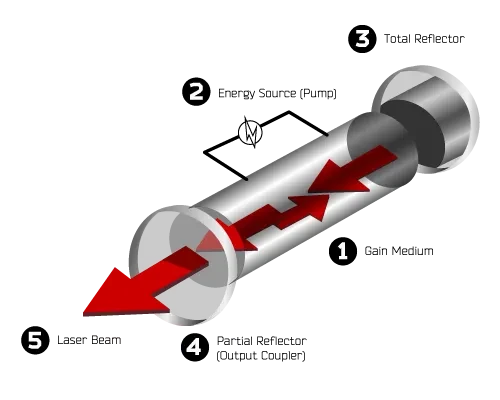Laser principles of operation
Properties Of Lasers
Lasers have three big advantages compared to conventional light sources: Its emission is monochrome, directional and coherent. These characteristics enable users to send laser light on located area with defined quantity and definite time scale.
LASER is the acronym for Light Amplification by Stimulated Emission of Radiation.
Basic Components Of Lasers
Laser consists of a gain medium (1), an energy source (2) to energize it and optical resonators (3 and 4) to provide optical feedback. The gain medium is a material with properties that allow energy storage. That energy will be transformed into heat or lead to the random emission of an optical particle, named a photon.
Photons is to laser what electrons are to electricity!
The laser effect is based on stimulated emission which force the gain medium to emit the same photon as initially present in the medium. The integration of the gain medium (1) between the two reflective parts (3 and 4) of an optical cavity favors the amplification of a given laser wavelength. The laser wavelength corresponds to the color of the laser, although industrial lasers are actually invisibles to the human eye.
In industrial applications, the laser wavelength is chosen so that it best interact with a given material type.
